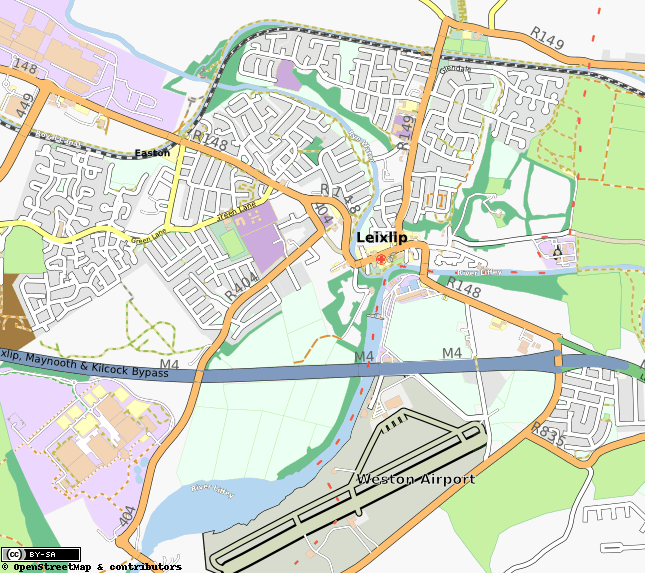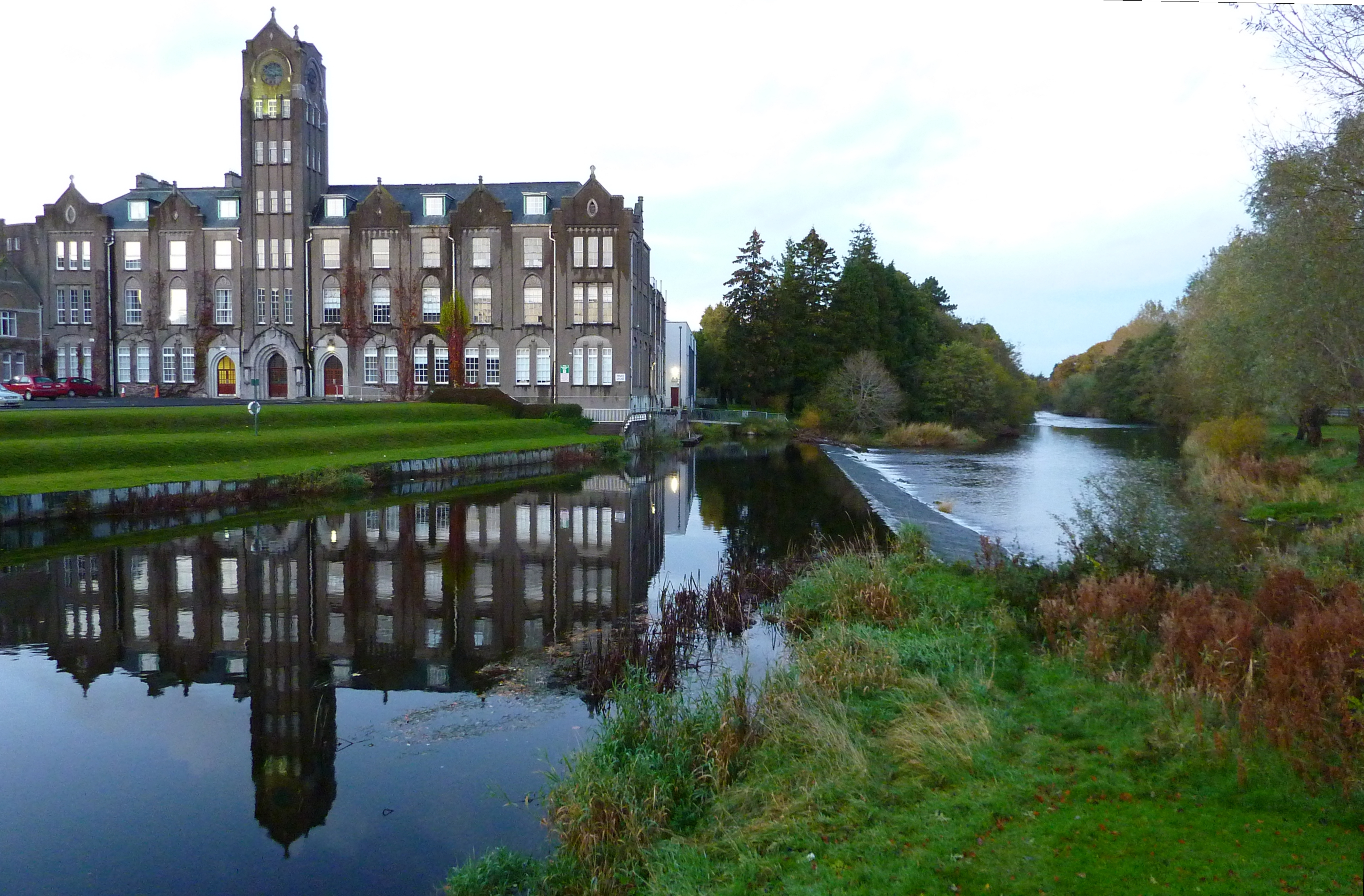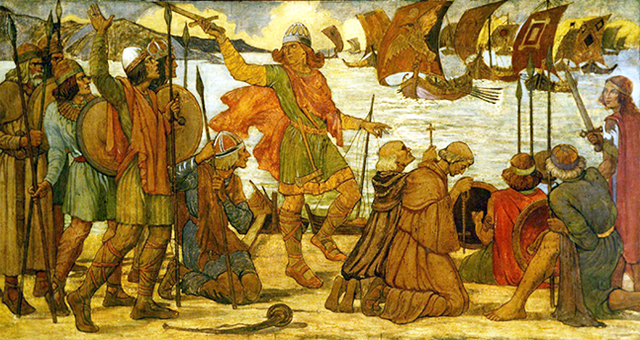|
Leixlip
Leixlip ( or ; , ) is a town in north-east County Kildare, Ireland. Its location on the confluence of the River Liffey and the Rye Water has marked it as a frontier town historically: on the border between the ancient kingdoms of Leinster and Brega, as an outpost of The Pale, and on Kildare's border with County Dublin. Leixlip was also a civil parish in the ancient barony of Salt North. As of 2022, the population of the town was 16,773. It is the fifth largest town in Kildare, and the 30th largest in Ireland. Name The placename comes from the Old Norse ''lax hlaup'' ( Younger Futhark: ᛚᛅᚼᛋ ᚼᛚᛅᚢᛒ; ) which means "salmon leap". The name in the Irish language (''Léim an Bhradáin'') is a direct translation of this, and was first adopted in the 1890s. In Latin, it is ''Saltus salmonis'', from which comes the names of the baronies of North Salt and South Salt. History Leixlip was a possible site of the Battle of Confey, in which the Viking King Sigtrygg ... [...More Info...] [...Related Items...] OR: [Wikipedia] [Google] [Baidu] |
Leixlip (civil Parish)
Leixlip () is a Civil parishes in Ireland, civil parish and a townland located in the north-eastern corner of County Kildare, Republic of Ireland, Ireland. The civil parish is mainly in the ancient Barony (Ireland), barony of Salt North with a small part in the neighbouring barony of Newcastle (County Dublin barony), Newcastle. It is centred on the town of Leixlip. In geology, the parish rests on a substratum of limestone, and contains chalybeate springs. It lies at the confluence of the River Liffey and the River Rye (Ireland), Rye Water. History According to Lewis' Topography of Ireland (1837), the parish contained 1624 inhabitants, of which 1159 were in the town and it comprised 7974 statute Acre#United Kingdom, acres. The soil was recorded as "good" with a considerable portion of the land being "in pasture for fattening stock for the Dublin, Liverpool, and Bristol markets, and the remainder is under tillage". Lewis recorded that the living was a Rector (ecclesiastical), recto ... [...More Info...] [...Related Items...] OR: [Wikipedia] [Google] [Baidu] |
River Rye (Ireland)
The River Rye or Ryewater () is a tributary of the River Liffey. It rises in County Meath, flowing south-east for 19 miles. Although the river has been the subject of arterial drainage schemes, it is generally fast flowing over a stoney bottom. The Rye's major tributary is the Lyreen River, Lyreen. Route The Rye runs north of Kilcock and Maynooth. Maynooth Castle is built between the Lyreen River, Lyreen and its tributary the Joan Slade River. The Lyreen and Rye meet to the east of Maynooth and flow on through the estate of Carton House. In the estate, the river was widened to form an ornamental lake within the Georgian parklands, further enhanced by an ornamental bridge and boathouse. The river then flows behind Intel Ireland where Intel have been monitoring the water quality since 1989. Near Louisa Bridge in Leixlip the waters from the Leixlip Spa flow into Rye River. There is also an overflow from the canal. The Rye then flows under the Royal Canal, which is carried in the ... [...More Info...] [...Related Items...] OR: [Wikipedia] [Google] [Baidu] |
Kildare North (Dáil Constituency)
Kildare North is a parliamentary constituency represented in Dáil Éireann, the lower house of the Irish parliament or Oireachtas. The constituency elects five deputies ( Teachtaí Dála, commonly known as TDs) on the electoral system of proportional representation by means of the single transferable vote (PR-STV). History and boundaries The constituency was created at the 1997 general election, when the former 5-seat Kildare constituency was divided into Kildare North and Kildare South. At the 1997 and 2002 elections, Kildare North was a 3-seat constituency, but it was allocated an extra seat at the 2007 general election. The constituency spans the more densely populated north-eastern corner of County Kildare, taking in the towns of Celbridge, Clane, Leixlip, Kilcock, Maynooth and Naas. The Constituency Review Report 2023 of the Electoral Commission recommended that at the next general election, Kildare North be increased to a five-seat constituency with the transfer ... [...More Info...] [...Related Items...] OR: [Wikipedia] [Google] [Baidu] |
County Kildare
County Kildare () is a Counties of Ireland, county in Ireland. It is in the Provinces of Ireland, province of Leinster and is part of the Eastern and Midland Region. It is named after the town of Kildare. Kildare County Council is the Local government in the Republic of Ireland, local authority for the county, which had a population of 246,977 at the 2022 census. Geography and subdivisions Kildare is the 24th-largest of Ireland's 32 counties in area and the seventh-largest in terms of population. It is the eighth largest of Leinster's twelve counties in size, and the second largest in terms of population. It is bordered by the counties of County Carlow, Carlow, County Laois, Laois, County Meath, Meath, County Offaly, Offaly, South Dublin and County Wicklow, Wicklow. As an inland county, Kildare is generally a lowland region. The county's highest points are the foothills of the Wicklow Mountains bordering to the east. The highest point in Kildare is Cupidstown Hill on the border w ... [...More Info...] [...Related Items...] OR: [Wikipedia] [Google] [Baidu] |
River Liffey
The River Liffey (Irish language, Irish: ''An Life'', historically ''An Ruirthe(a)ch'') is a river in eastern Ireland that ultimately flows through the centre of Dublin to its mouth within Dublin Bay. Its major Tributary, tributaries include the River Dodder, the River Poddle and the River Camac. The river supplies much of Dublin's water and supports a range of recreational activities. Name While Ptolemy's ''Geography (Ptolemy), Geography'' (2nd century AD) describes a river which he labels Οβοκα (''Oboka''), this is not the Liffey: ultimately it leads to the name of the River Avoca in County Wicklow. According to "Place Names from our Older Literature - IV." by Boswell, C. S. (1904 Connradh na Gaedhilge) the river takes its name from Magh Life, i.e. the plain of Kildare through which the Life flows. This in turn takes its name from Life, daughter of Canann Curthach, who eloped with and married Deltbanna mac Druchta, cup-bearer to Conaire Mór High King of Ireland. Life ... [...More Info...] [...Related Items...] OR: [Wikipedia] [Google] [Baidu] |
Kildare County Council
Kildare County Council () is the Local government in the Republic of Ireland, local authority of County Kildare, Republic of Ireland, Ireland. As a county council, it is governed by the Local Government Act 2001. The council is responsible for housing and community, roads and transportation, urban planning and development, amenity and culture, and natural environment, environment. The council has 40 elected members. Elections are held every five years and are by single transferable vote. The head of the council has the title of Cathaoirleach (local government), Cathaoirleach (chairperson). The county administration is headed by a Chief executive (Irish local government), chief executive, Sonya Kavanagh. The county town is Naas. History Kildare County Council was established on 1 April 1899 under the Local Government (Ireland) Act 1898 for the administrative county of County Kildare, succeeding the former judicial county of Kildare. It was originally based at Naas Courthouse but ... [...More Info...] [...Related Items...] OR: [Wikipedia] [Google] [Baidu] |
Salt North
Salt North () is a barony in County Kildare, Ireland. Etymology Salt North derives its name from the Latin name of Leixlip: ''Saltus salmonis'' (literally "salmon leap"; the English name is derived from Old Norse ''Lax-hlaup''). This makes Salt one of very few Irish placenames derived directly from Latin. Location Salt North barony is located in the north-eastern corner of County Kildare, north of the River Liffey and east of the Lyreen River. It borders County Meath to the north and Fingal to the east. History The Uí Gabla sept of the Dál Chormaic is noted early in Salt North. Ó Gelbroin is found as a chief of Mag Life on the plains of the river Liffey here. There was originally a single Salt barony, divided into north and south baronies before 1807. List of settlements Below is a list of settlements in North Salt: *Celbridge *Leixlip *Maynooth *Straffan Below is a list of civil parishes in North Salt: *Leixlip (civil parish) Leixlip () is a Civil parishes in Irel ... [...More Info...] [...Related Items...] OR: [Wikipedia] [Google] [Baidu] |
Eircode
A postal address in Ireland is a place of Delivery (commerce), delivery defined by Irish Standard (IS) EN 14142-1:2011 ("Postal services. Address databases") and serviced by the universal service provider, . Its addressing guides comply with the guidelines of the Universal Postal Union (UPU), the United Nations-affiliated body responsible for promoting standards in the postal industry, across the world. In Ireland, 35% of premises (over 600,000) have non-unique addresses due to an absence of house numbers or names. Before the introduction of a national postcode system (Eircode) in 2015, this required postal workers to remember which family names corresponded to which house in smaller towns, and many townlands. , An Post encourages customers to use Eircode because it ensures that their post person can pinpoint the exact location. Ireland was the last country in the OECD to create a postcode system. In July 2015 all 2.2 million residential and business addresses in Ireland r ... [...More Info...] [...Related Items...] OR: [Wikipedia] [Google] [Baidu] |
Irish Language
Irish (Standard Irish: ), also known as Irish Gaelic or simply Gaelic ( ), is a Celtic language of the Indo-European language family. It is a member of the Goidelic languages of the Insular Celtic sub branch of the family and is indigenous language, indigenous to the island of Ireland. It was the majority of the population's first language until the 19th century, when English (language), English gradually became dominant, particularly in the last decades of the century, in what is sometimes characterised as a result of linguistic imperialism. Today, Irish is still commonly spoken as a first language in Ireland's Gaeltacht regions, in which 2% of Ireland's population lived in 2022. The total number of people (aged 3 and over) in Ireland who declared they could speak Irish in April 2022 was 1,873,997, representing 40% of respondents, but of these, 472,887 said they never spoke it and a further 551,993 said they only spoke it within the education system. Linguistic analyses o ... [...More Info...] [...Related Items...] OR: [Wikipedia] [Google] [Baidu] |
County Dublin
County Dublin ( or ) is a Counties of Ireland, county in Republic of Ireland, Ireland, and holds its capital city, Dublin. It is located on the island's east coast, within the Provinces of Ireland, province of Leinster. Until 1994, County Dublin (excluding the city) was a single Local government in the Republic of Ireland, local government area; in that year, the county council was divided into three new administrative counties: Dún Laoghaire–Rathdown, Fingal and South Dublin. The three administrative counties together with Dublin City proper form a NUTS III NUTS statistical regions of Ireland, statistical region of Ireland (coded IE061). County Dublin remains a single administrative unit for the purposes of the courts (including the Dublin County Sheriff, but excluding the bailiwick of the Dublin City Sheriff) and Dublin County combined with Dublin City forms the Judicial County of Dublin, including Dublin Circuit Court, the Dublin County Registrar and the Dublin Metropolitan ... [...More Info...] [...Related Items...] OR: [Wikipedia] [Google] [Baidu] |
The Pale
The Pale ( Irish: ''An Pháil'') or the English Pale (' or ') was the part of Ireland directly under the control of the English government in the Late Middle Ages. It had been reduced by the late 15th century to an area along the east coast stretching north from Dalkey, which is just south of Dublin, to the garrison town of Dundalk. The inland boundary went to Naas and Leixlip around the Earldom of Kildare, towards Trim and north towards Kells. In this district, many townlands have English or Norman-French names, the latter associated with Anglo-Norman influence in England. Etymology The word ''pale'', meaning a fence, is derived from the Latin word ', meaning "stake", specifically a stake used to support a fence. A paling fence is made of pales ganged side by side, and the word ''palisade'' is derived from the same root. From this came the figurative meaning of "boundary". The ''Oxford English Dictionary'' is dubious about the popular notion that the phrase '' beyond the ... [...More Info...] [...Related Items...] OR: [Wikipedia] [Google] [Baidu] |








